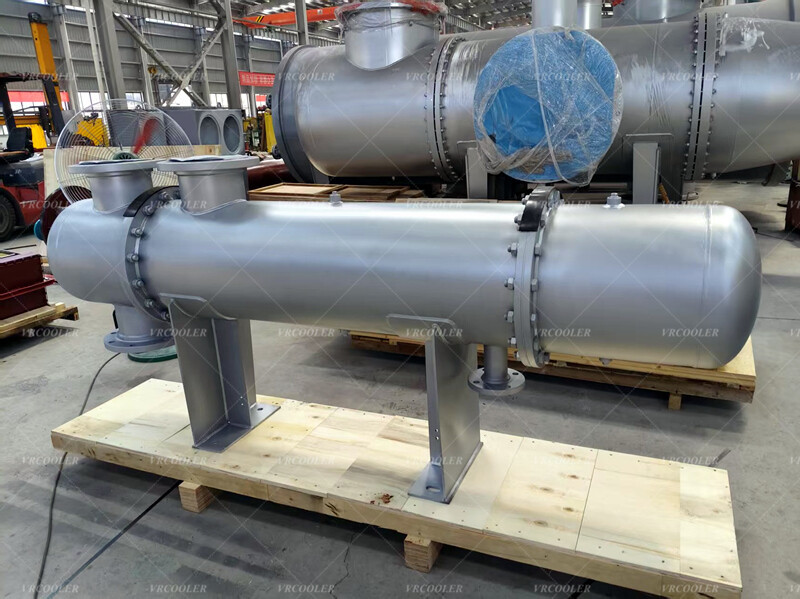Shell-and-tube Heat Exchanger Used in Refineries
The core processes of refineries (such as atmospheric and vacuum distillation, catalytic cracking, hydroprocessing, and delayed coking) all rely on shell-and-tube heat exchangers to regulate the temperature of the medium. Specific applications include:
Atmospheric and vacuum distillation unit
This is the “first step” in refining, where crude oil is separated into fractions such as gasoline, diesel, and wax oil. The core functions of shell-and-tube heat exchangers in this process are “heat recovery” and “temperature pre-treatment”:
Crude oil preheating: Before entering the heater furnace, crude oil must pass through a shell-and-tube heat exchanger to exchange heat with high-temperature media such as tower top oil vapor and side stream fractions (e.g., diesel, wax oil), raising the temperature from ambient to 200-300°C, thereby reducing fuel consumption in the heater furnace (accounting for over 60% of the unit's energy savings).
Tower top condensation: The oil and gas (containing light components and water vapor) at the top of the atmospheric tower and vacuum tower must be condensed into liquid form. This is achieved through a shell-and-tube condenser (with oil and gas flowing in the shell side and circulating water or coolant flowing in the tube side). The condensed liquid can then be further separated into light fractions.
Catalytic cracking unit
This unit converts heavy oil (such as wax oil) into light oil (gasoline, diesel). Shell-and-tube heat exchangers are used for cooling reaction products and preheating feedstock:
Reaction oil and gas cooling: The reaction products of catalytic cracking (high-temperature oil and gas, approximately 500-600°C) must be cooled to below 300°C. This is achieved through shell-and-tube heat exchangers that exchange heat with circulating water, diesel, or other cooling media, while simultaneously recovering heat for feedstock preheating.
Regenerator flue gas heat exchange: The high-temperature flue gas (approximately 700-800°C) generated during catalyst regeneration is cooled using shell-and-tube heat exchangers to exchange heat with boiler feedwater, producing steam (used for power generation or process heating), thereby achieving waste heat recovery.
Hydroprocessing/Hydrocracking Unit
These units desulfurize and denitrogen oil products under high pressure (10–15 MPa) and high temperature (300–400°C). Shell-and-tube heat exchangers must withstand high-pressure and hydrogen-corrosive environments:
Raw material preheating: Raw materials (such as straight-run diesel) are heated to the reaction temperature (approximately 300°C) by exchanging heat with the reaction products (high-temperature, high-pressure) through shell-and-tube heat exchangers, thereby reducing the load on the heating furnace.
Reaction product cooling: The high-temperature reaction products (containing hydrogen gas and light oil) must be cooled to below 50°C (to facilitate gas-liquid separation) by exchanging heat with circulating water or a low-temperature medium (such as propane) through shell-and-tube heat exchangers.
Delayed coking unit
Used to process heavy residual oil, shell-and-tube heat exchangers are primarily used for residual oil preheating and oil-gas condensation:
Before entering the coking furnace, the residual oil is heated by a shell-and-tube heat exchanger in contact with high-temperature coke oil vapor, thereby increasing its temperature (saving fuel);
The oil vapor from the top of the coking tower (containing light oil and water vapor) is cooled by a shell-and-tube condenser to separate out fractions such as gasoline and diesel.


